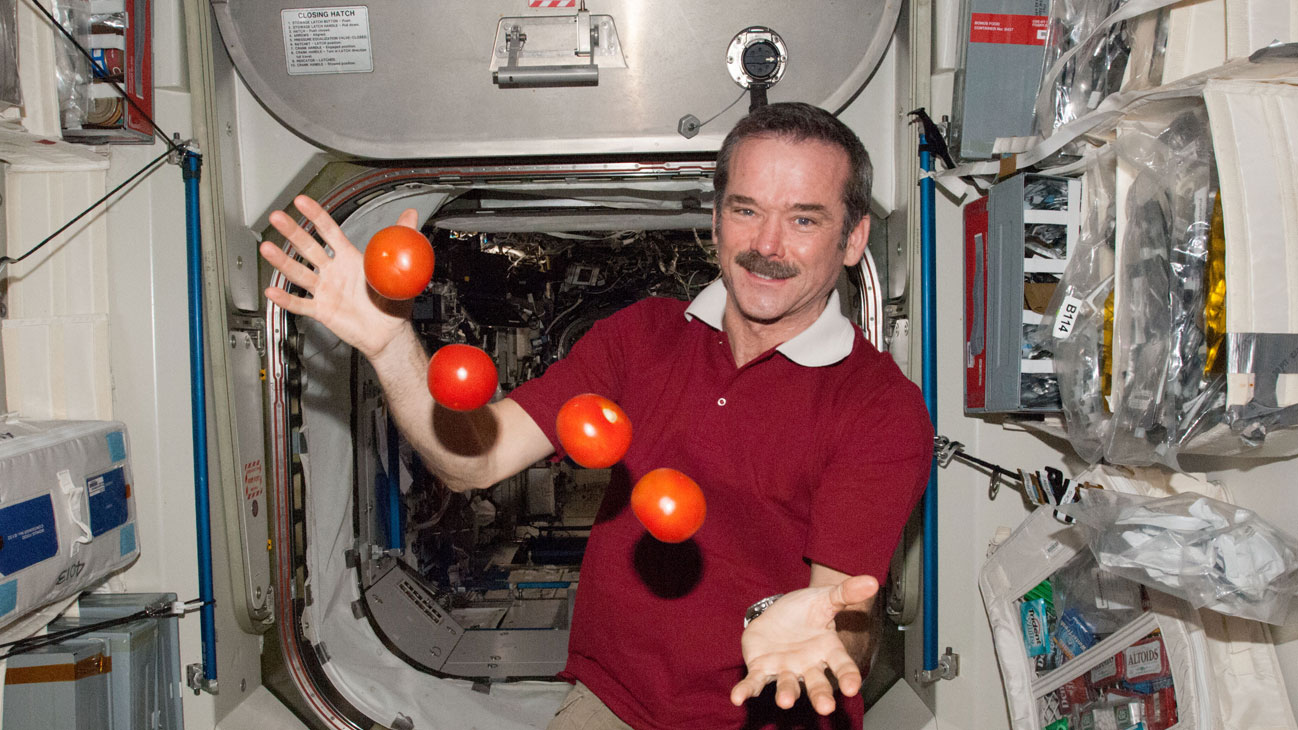From being the first Canadian to walk in space to serving as commander of the International Space Station and making the first music video shot in space, Col. Chris Hadfield has had a stellar career. In his new book, An Astronaut’s Guide to Life on Earth, the retired astronaut draws parallels between his out-of-this-world experiences and situations a little closer to home. Wired magazine spoke to him about contaminated space suits, communicating his work to the masses, and one-way tickets to Mars:
Chris Hadfield starts by explaining that lessons learned from being astronaut can have universal applications.
“It seems like not just a dream job, but like a job of dreams — a surreal kind of job where, as part of your job, half a million people watch you get into your vehicle and launch into work … It almost seems supernatural,” he says. “So I think it’s surprising for people to see what the job actually consists of, which is years and years of work, and helping other people fly into space, and studying, and learning all the time, and preparation, and a necessary and eternal patience and non-expectation of things to happen.”
“Also, the skills that I have in space are extremely deep but very narrow,” he adds. “To be one of the world’s top space robotic arm operators is a necessary skill for an astronaut, but it doesn’t have much carry-over.”
Some aspects of his training, however, could be useful to anyone. First up: learning not to panic. “A lot of people live their lives hoping certain things won’t happen, because they don’t want to have to face them,” Hadfield says. His advice? Keep a cool head, face up to the problem, and ask yourself, “What’s the next thing that will kill me, and how can I get ready for this?”
Asked what the most panic-inducing moment of his career was, he responds, “Being blinded on a spacewalk would make most people feel a little unsettled, I think.” This happened on his first spacewalk in 2001, when he was on a mission to install robotic arm Canadarm2 on the ISS. “To be on my very first spacewalk, to be outside, and to have contamination in my suit to the point that I couldn’t see in either eye — that, I think, would cause some people to lose control,” he says.
When he isn’t focusing all his efforts on keeping himself alive, one of Hadfield’s priorities has always been to communicate his work to the public. On his last mission before his retirement this year, he used social media to chronicle life on the space station, and was amazed at the response.
“I guess what surprises me — more it delights me — is the level of ability now to do something that I’ve been trying to do since I was just a regular fighter pilot,” he says. “Some of the greatest reality television we ever had was the moon landings. When you think about it, that was human emotion and people, unscripted, working with each other — and millions and millions of people around the world, glued to their television sets to share real-time in a brand new, fascinating human experience.”
His own foray into social media reached a pinnacle when he filmed his rendition of David Bowie’s Space Oddity. It was his son, he explains, who told him he should do it.
“My reaction was, Really? Why would I do that? It’s this weird old song about an astronaut dying, why would I want to do that?”
He eventually agreed — on the condition the words were changed so the astronaut didn’t die. He recorded the audio track on his iPad using GarageBand, and filmed himself floating around singing the song. With Bowie’s permission, the video was released on May 12, the night before he left the ISS. It’s since had over 18 million views on Youtube. “For me, I don’t know what to think about that,” he says. “That’s pretty incredible.”
Now he’s retired, Hadfield will be keeping his feet on the earth. But what does he think about space travel in the future? We asked him his thoughts on the feasibility of one-way missions — to Mars or Jupiter’s moon Europa, for instance.
“They’re very feasible when you look at them through the lens of history,” he replies. “That’s how we settled most of the world. We’d send our pros off and we would go look at a place and come back and report on its capacity to support life.”
That said, he doesn’t see it happening soon. “It’s too early now I think, because our technology is so primitive,” he explains. “It’s very expensive to make it safe. If we were willing to kill people regularly, all the time, during launch and during spaceflight, then a lot more people would be able to do it. But we aren’t, and it’s probably a good thing.”
He concedes that if spaceflight becomes privately funded, people would have more freedom to choose how to use future innovations in engines and propulsion — “And there are lots of people in the world who would, just like we have for our entire history as a species, choose to go one-way.”
Would he ever consider it? “I’ve put a lot of my life into making it possible to fly in space at all,” he says. “And, you know, I’m in my mid-fifties now, and I think my family would object if I went one-way …”.

